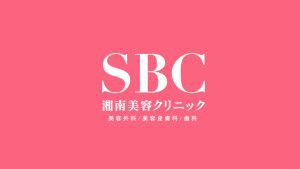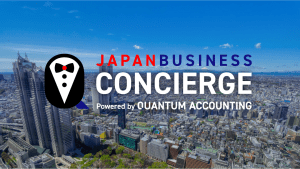(Image courtesy of the SBC website.)
Introduction
On September 17, 2024, SBC Medical Group Holdings (SBC), the operator of Shonan Beauty Clinic in Japan, was listed on Nasdaq through a merger with a Special Purpose Acquisition Company (SPAC), Pono Capital Two (Press Release). Initially, SBC’s valuation was set at $1.2 billion, but this was ultimately reduced to $1.0 billion against a backdrop of changing market conditions and waning investor interest. Nevertheless, this remains a remarkably high valuation among recent U.S. listings by Japanese companies.
However, to say the listing was an unqualified success would not be entirely accurate. Behind this lies a mechanism unique to SPACs known as “redemption.”
SBC's Nasdaq Listing via SPAC, High Redemption Rate, and Unique Shareholding Structure
SBC’s SPAC, Pono Capital Two, was established in Hawaii by angel investor and Keio University SFC special visiting professor Kotaro Chiba, along with Mr. Dustin Shindo. The preceding first SPAC, Pono Capital Corp., successfully listed AERWINS Technologies, Inc. (AERWINS), the holding company for A.L.I. Technologies, known for its development of a “flying bike.”
Please also see our article on AERWINS.
As SBC’s valuation was determined to be $1.0 billion, one might assume a substantial amount of capital was successfully raised. However, our investigation revealed that the funds ultimately remaining with SBC amounted to only approximately $20 million. The reason for this was that a vast majority of Pono Capital Two’s shareholders—approximately 88%—chose redemption (cashing out their shares). This led to a significant outflow of cash, reducing the funds left in the SPAC’s trust account (in other words, the capital raised during the SPAC’s IPO) to about $20 million.
When faced with such a high redemption rate, a SPAC typically conducts additional fundraising (such as a PIPE) at the time of the de-SPAC (business combination). However, SBC proceeded with the de-SPAC (merger with SBC) without arranging this additional financing. This suggests a strategic decision, likely based on SBC possessing sufficient cash on hand, that prioritized securing access to U.S. capital markets via the de-SPAC listing. This move establishes a pathway to procure funds necessary for future growth through a Follow-on Offering (an additional public offering conducted after the de-SPAC).
As a result of the high redemption rate—which returned most of the funds raised at the SPAC IPO to shareholders—and the absence of new PIPE financing, the post-de-SPAC (business combination) ownership structure became quite interesting. SBC’s original shareholders held 93.7% of the shares, public shareholders held only 1.5%, and the sponsors of Pono Capital Two and their affiliates held 4.8%.
The Redemption Mechanism
Redemption refers to the right of SPAC shareholders to have the SPAC buy back their shares, allowing them to receive cash, prior to the merger. From the SPAC’s perspective, this is a redemption of its shares. A SPAC typically raises funds through an IPO and holds this capital in a trust account. When a de-SPAC (business combination) between the SPAC and a target company is announced, the SPAC’s shareholders have two options:
- Approve the merger and continue holding the shares: Shareholders retain their shares in the post-de-SPAC entity, anticipating future stock price appreciation.
- Exercise redemption rights: Shareholders have the SPAC redeem their shares (for a price equivalent to the original purchase price) and receive cash from the trust account. Redemption is often chosen if shareholders feel uncertain about the business combination or wish to avoid risk.
The Case of JEPLAN: A Japanese Company That Similarly Aimed for a SPAC Listing
Another Japanese company, JEPLAN Inc., also sought a U.S. listing (NYSE) via a SPAC but ultimately chose to abandon the listing.
Please also see our article on JEPLAN.
The reason for the termination of the de-SPAC (business combination) agreement between JEPLAN and AP Acquisition Corp. was the determination that meeting the minimum cash condition would be difficult. This is one of the most common situations seen in SPAC de-SPAC (business combination) processes.
A SPAC raises funds via an IPO, places that money in a trust, and then acquires a target company to take it public. The advantage for the target company in merging with a SPAC is the ability to use the capital brought in by the SPAC (i.e., the cash in the trust account) to fund business expansion after the merger.
However, as explained in the SBC case, recent years have seen a rise in cases where the majority of SPAC shareholders opt for redemption during the de-SPAC (business combination). Consequently, target companies, when signing a de-SPAC agreement, now often require that a certain level of cash remains with the SPAC post-combination. This is known as the “minimum cash condition.” To meet this condition, shareholders must leave their funds in the trust rather than withdrawing them.
In the case of JEPLAN and AP Acquisition Corp., the likelihood of this minimum cash condition being met was deemed low, and the de-SPAC agreement was terminated by mutual consent. This was presumably because the risk of failing to secure the planned capital—due to a large number of investors withdrawing funds (i.e., redeeming)—had increased, and they were unable to secure alternative PIPE financing to compensate for the shortfall.
Such an increase in redemptions (fund withdrawals) is particularly common during periods of market instability or when investor expectations for the target company decline, sometimes resulting in the business combination failing to materialize. It is believed that in JEPLAN’s case, the necessary capital procurement could not be achieved, leading to the termination of the business combination agreement.
Conclusion: The Evolution and Future of the SPAC Market
The SPAC market experienced explosive growth from 2020 to 2021. However, it subsequently faced increased criticism due to poor performance, high redemption rates, and several scandals. In response, regulators such as the SEC have tightened regulations by enhancing disclosures, clarifying liability, and repealing safe harbor rules for forward-looking projections. As a result, companies using SPACs are now required to meet transparency and accountability standards similar to those of a traditional IPO, and the former advantages of SPACs have been significantly diminished. Going forward, companies and investors utilizing SPACs must operate with appropriate risk management, bearing these strengthened regulations in mind.
Our firm provides support for U.S. listings, including Nasdaq, for Japanese companies. If this article has piqued your interest and you wish to learn more, please do not hesitate to contact us. We look forward to the opportunity to speak with you—those who are driving forward today with an eye toward the future—and to offer our support where we can be of assistance. For inquiries, please feel free to reach out to us using the contact form below.









